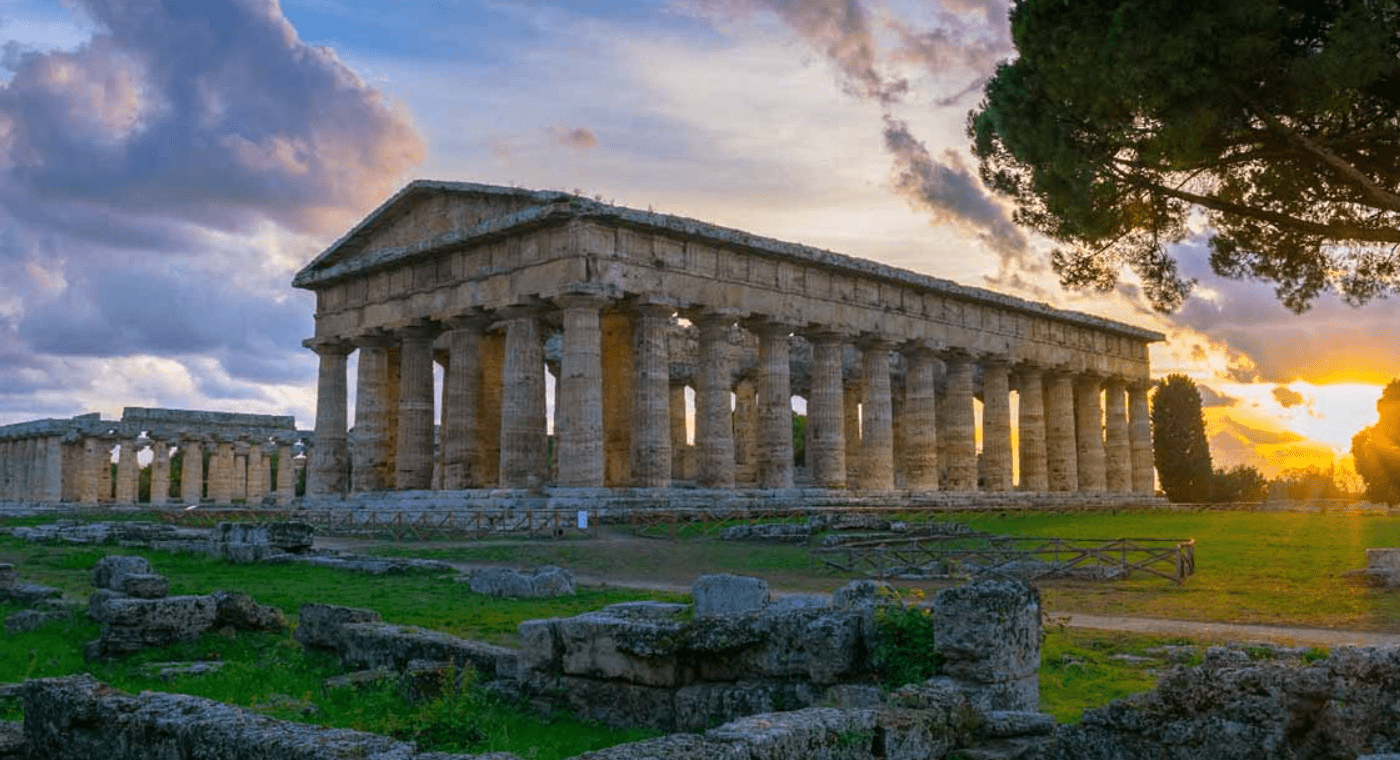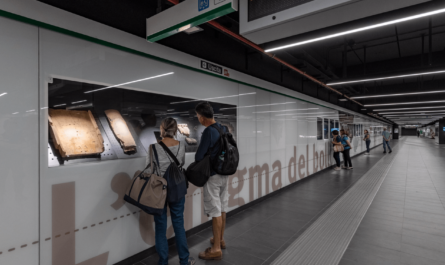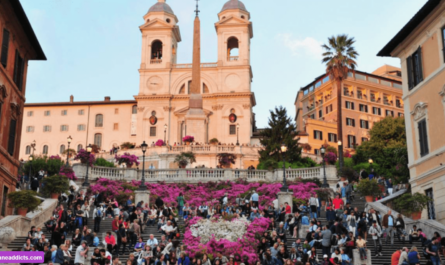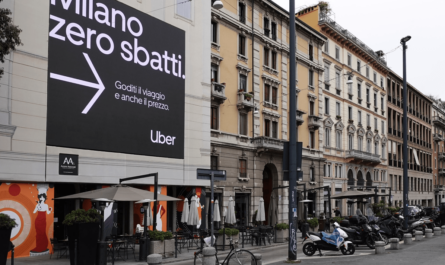Ancient temples in Rome stand as some of the city’s most significant landmarks. While some require a ticket for entry as part of the Roman ruins package, many are open to the public at no cost and are easy to visit.
Several of Rome’s surviving Roman temples are located within the Roman Forum. If you plan to visit the Colosseum, you can include these important ruins in your itinerary since they are covered by the same ticket that grants access to the villas and buildings on Palatine Hill. Outside the Roman Forum, you’ll also find several notable temples scattered throughout Rome.
This guide will highlight the most important temples of Ancient Rome, including those still standing and those that have vanished over time. To simplify your visit, we have included a map to help you locate and reach these significant sites.
What are the Oldest Temples in Rome?
The oldest standing temple in Rome is the Temple of Hercules Victor, built around 120 BC in the 2nd century BC.
However, the earliest Roman temples were devoted to Jupiter Stator. Though there were originally two such temples, both are now lost to history.
What Was the Most Important Temple in Ancient Rome?
Ancient Rome did not have a single most important temple but rather several dedicated to major deities. Among them was the Temple of Venus and Roma, situated on the eastern side of the Roman Forum, notable for its size. Additionally, the Temple of Hercules Victor and the Pantheon—dedicated to all gods—were also significant.
Notable Temples of Ancient Rome
Here’s an easy-to-follow map highlighting the prominent temples of Rome that are still visible and worth visiting.
Temple of Portunus
One of the best-preserved ancient temples in Rome, the Temple of Portunus stands between Santa Maria in Cosmedin and the ancient Ponte Rotto. Known also as the Temple of Fortuna Virilis, it was dedicated to Portunus, the river deity. Although its current appearance dates from the 2nd to 1st centuries BC, its original construction goes back to the 4th to 3rd centuries BC. The temple is fenced off but visible from the outside, allowing views of its internal Byzantine frescoes.
Where: Piazza della Bocca della Verità/Via di Ponte Rotto
When: Visible from outside only
Temple of Hercules Victor
The Temple of Hercules Victor, also called Hercules Olivarius, is the oldest surviving marble temple in Rome. Located near the Temple of Portunus, it is recognized by its round shape. Dedicated to Hercules, the temple was built around the late 2nd century BC by Marcus Octavius Herennius. It was later converted into the church of Santo Stefano delle Carrozze and then to Santa Maria del Sole in the 16th century, featuring a 15th-century fresco of the Madonna.
Where: Piazza della Bocca della Verità
When: Visible from outside only
Pantheon
Now a Catholic church and one of Rome’s most famous landmarks, the Pantheon was originally built between 25 and 27 BC by Marcus Vipsanius Agrippa. The Pantheon is the only ancient Roman building that has largely preserved its original form. It was converted into a Christian church by Pope Boniface IV in 608 and is now named Saint Maria ad Martyres. The Pantheon has influenced many artists, including Raphael, who requested to be buried there.
Where: Piazza della Rotonda
When: Daily from 9 am to 7 pm (last entrance at 6:45 pm)
Temple of Castor and Pollux (Tempio dei Dioscuri)
Located in the Roman Forum, the Temple of Castor and Pollux is easily identifiable by its three tall columns. Built in the 5th century BC to honor the twin sons of Zeus, the temple’s high podium is from a later reconstruction by Metellus in 117 BC. The Corinthian columns and trabeation visible today are from a renovation under Tiberius.
Where: The Roman Forum
When: Daily from 9 am until sunset
Temple of Antoninus and Faustina
Situated in the Roman Forum, the Temple of Antoninus and Faustina stands on a high podium with a modern staircase. Erected in 141 AD by Emperor Antoninus Pius in memory of his wife Faustina, the temple was later named in honor of both. It was transformed into the church of San Lorenzo in Miranda in the 7th century.
Where: The Roman Forum
When: Daily from 9 am until sunset
Temple of Vesta
One of Rome’s oldest and most significant sanctuaries, the Temple of Vesta was constructed in the 4th century BC. It housed the sacred fire, a symbol of Rome’s eternal spirit. The temple’s circular design included twenty Corinthian columns surrounding the cell that held the fire. The Vestal Virgins, who maintained the sacred flame, lived in nearby Casa delle Vestali.
Where: The Roman Forum
When: Daily from 9 am until sunset
Temple of Saturn
Located in the Roman Forum, the Temple of Saturn was originally built around 498 BC and renovated in 42 BC with war booty from Syria. The temple features eight granite columns with white marble Ionic capitals. Along with the Temple of Antoninus and Faustina, it remains one of the largest sacred structures in the Forum.
Where: The Roman Forum
When: Daily from 9 am until sunset
Temple of Vespasian
Dedicated to Emperor Vespasian, who was deified after his death in 79 AD, this temple is located near the Temple of Saturn and the Arch of Septimius Severus in the Roman Forum. Only three tall Corinthian columns remain. Initially dedicated to Vespasian alone, it was later expanded to include his son Titus.
Where: The Roman Forum
When: Daily from 9 am until sunset
Temple of Apollo Sosianus (and Bellona)
Situated near the Theater of Marcello and the Porticus of Octavia, the Temple of Apollo Sosianus was built between 433 and 431 BC. It was dedicated to Apollo Medicus to commemorate the end of a plague. The temple, rebuilt in 32 BC by Gaius Sosio, is part of a larger archaeological area that also includes the ruins of the Temple of Bellona, a war deity.
Where: Via del Teatro di Marcello
When: Daily from 9 am to 7 pm
Temple of Minerva Medica
Located near Termini train station, the Temple of Minerva Medica was named for a statue mistakenly associated with the goddess Minerva. Dating to the 4th century, it was initially thought to be part of the Horti Liciniani gardens but is now identified as belonging to the Horti Pallantiani. It remains a significant architectural feature amidst modern buildings.
Where: Via Giovanni Giolitti
When: Always visible
Mithra Temples
Numerous Mithraic temples exist around Rome, with the largest found beneath the Baths of Caracalla. Other notable sites include the Mithra temples under Palazzo Barberini, in the Circus Maximus, and beneath the church of Santa Prisca on Aventine Hill. Some temples, like the one under San Clemente Basilica, are open to the public without prior booking.
Lost Temples of Ancient Rome (+ 2 “Fakes”)
Temple of Diana (Villa Borghese)
Not an ancient temple but an 18th-century construction by architect Antonio Asprucci, this small round temple in the Villa Borghese gardens featured a statue of Diana. The statue, originally from Hadrian’s time, was sold to France in 1807 and is now in the Louvre Museum.
Where: Viale della Casina di Raffaello, Villa Borghese
When: Always visible
Temple of Aesculapius
Built between 1785 and 1792 in Neo-Classical Ionic style by Antonio and Mario Asprucci, this small temple on an island in the Giardino del Lago was named after the god of medicine. It remains a picturesque spot where visitors can row boats around the temple.
Where: Via Ulisse Aldrovandi
When: Always visible
Tempio di Giove Statore (Temple of Jupiter Stator)
There were two temples dedicated to Jupiter Stator, built in the 3rd century BC and 146 BC. Both have vanished, leaving no physical remains.
Temple of Diana (Aventine Hill)
Ordered by King Servius Tulles, the Temple of Diana on Aventine Hill was significant for Latin city gatherings. It featured eight columns and a statue of Diana but no remnants remain.
Temple of Magna Mater (Palatine Hill)
This temple was dedicated to the Anatolian goddess Cybele and likely constructed in the 2nd century BC. It burned down twice before being rebuilt. Today, only parts of the temple remain, but it is depicted in a carving from the Claudian era.



